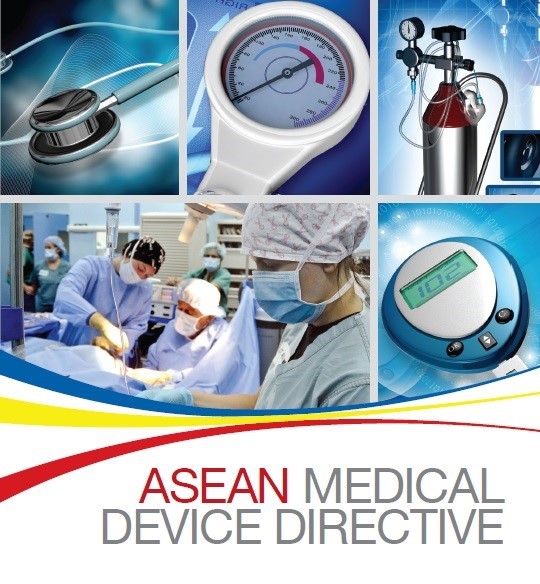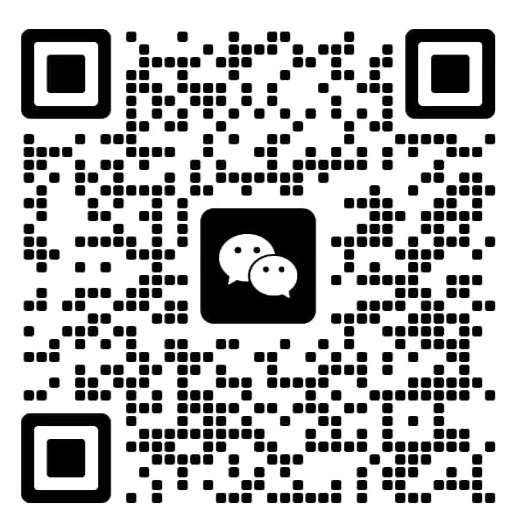Indonesia presents a promising market for medical products due to its expanding population, developing healthcare infrastructure, and increasing demand for advanced medical devices. However, strict regulations govern the entry of medical products into the market, ensuring public health and safety. This comprehensive guide outlines the documentation requirements, regulatory process, and practical tips for navigating medical registration requirements in Indonesia, with a focus on medical product registration, product registration, and medical device registration.
Regulatory Authorities for Medical Product Registration
The Ministry of Health primarily governs the registration of medical devices, defining their standards and classifications. BPOM oversees pharmaceuticals and health-related products. Together, these entities ensure that every product complies with the country’s strict safety, efficacy, and quality guidelines. Companies seeking to register medical products in Indonesia must effectively navigate these regulations to gain market access.
Key Governing Regulations
Several critical regulations define the legal framework for product registration in Indonesia:
- Regulation No. 1190/MENKES/PER/VIII/2010
This regulation provides the foundational classification and registration guidelines for medical devices in Indonesia. It defines the types of devices that require registration and their risk categories, emphasizing the importance of adherence to safety and functionality standards. Businesses aiming to meet medical device registration Indonesia standards must thoroughly understand this regulation.
- ASEAN Medical Device Directive (AMDD):
Indonesia adheres to the AMDD to align with the broader regional framework and ensure consistency with ASEAN member countries. This directive streamlines the registration process for medical devices across the region. The AMDD facilitates easier market access for international manufacturers by standardizing the regulatory requirements while ensuring patient safety.

- ISO 13485 Compliance:
Compliance with ISO 13485 is mandatory for medical device manufacturers looking to enter the Indonesian market. This international standard specifies requirements for a quality management system (QMS) tailored to medical device design, development, production, and servicing. Meeting this standard demonstrates a manufacturer’s commitment to quality and regulatory compliance.
Importance of Compliance with Regulatory Authorities
For companies pursuing medical product registration in Indonesia, understanding the roles of MoH and BPOM is crucial. These agencies rigorously assess product documentation to verify compliance with established regulations. The process involves several checkpoints, including clinical safety evaluations, risk assessments, and quality certifications. Non-compliance can result in delays, financial losses, or outright rejection of applications. Navigating these regulatory authorities successfully requires thorough documentation preparation and a clear understanding of the applicable laws. For example, companies submitting documents under the AMDD framework must ensure they include all necessary details about product design, manufacturing processes, and intended use.
Essential Documents for Medical Product Registration
Meeting medical registration requirements in Indonesia necessitates submitting a comprehensive set of documents. These materials are meticulously reviewed to confirm a product’s safety, efficacy, and quality before approval. The required documents fall into three primary categories: administrative, technical, and additional submissions. Each plays a critical role in ensuring a seamless medical product registration process in Indonesia.
Administrative Documents
Administrative documents are foundational for establishing the legitimacy of the manufacturer, applicant, and product during the product registration Indonesia process. These documents include:
- Business License (SIUP or PT PMA): Foreign manufacturers must possess a valid business license to operate in Indonesia legally. This license verifies that the company complies with Indonesian trade and industry laws.
- Import Permit: For local distributors importing foreign medical products, obtaining this permit is mandatory. It streamlines the import process and ensures compliance with customs regulations.
- Good Manufacturing Practice (GMP) Certification confirms that the manufacturing facility adheres to global safety and quality standards. It is critical for both local and international manufacturers.
- Declaration of Conformity: This document verifies that the medical device meets all applicable standards and regulatory requirements.
- Taxpayer Identification Number (NPWP): This ensures that all companies involved in the medical device registration Indonesia process are compliant with the country’s tax regulations.
Technical Documents
Technical documentation delves into the product’s design, composition, and intended use. It provides the technical foundation for assessing the product’s safety and effectiveness. Key technical documents include:
- Product Description: This outlines the product’s specifications, intended purpose, and usage. It serves as a critical reference for regulatory authorities during the evaluation process.
- Risk Analysis: Identifying potential risks associated with the product and proposing mitigation strategies is essential to meeting Indonesia’s medical registration requirements.
- Clinical Data (for Class C and D Devices): High-risk medical devices must provide clinical trial results or published research to substantiate claims of safety and efficacy.
- Stability Test Results: For pharmaceuticals, these results validate the product’s shelf life under specified storage conditions, ensuring safety and effectiveness throughout its lifecycle.
- Instructions for Use: Detailed guidelines for users ensure proper application, covering usage instructions, contraindications, and safety precautions.
Additional Documents
Additional documentation may be necessary for high-risk products or complex evaluations. These include:
- Toxicology Reports: Critical for products with potential chemical or biological hazards, toxicology reports assess the safety of these materials for human use.
- Published Articles: Peer-reviewed journal articles supporting the product’s claims can bolster the application by demonstrating scientific validation.
- Halal Certification: In Indonesia, where a significant portion of the population adheres to Islamic dietary laws, Halal certification is crucial for market acceptance of relevant products.
- Marketing Authorization Number (NIE): After product approval, this digital license authorizes the product’s entry into the Indonesian market and is a key milestone in the medical product registration Indonesia process.
The Medical Product Registration Process in Indonesia
The medical product registration Indonesia process is a structured and multi-phase approach designed to ensure that all medical devices and pharmaceuticals meet the stringent regulatory standards set by the Indonesian authorities. Each step requires meticulous attention to detail, from pre-submission preparation to post-market surveillance. Here, we break down the process into its key stages, offering insights to effectively navigate medical registration requirements in Indonesia.
Pre-Submission Preparation
The journey begins with thorough preparation before initiating the formal registration process. Manufacturers must collaborate with a local partner, typically a distributor, authorized to represent their products in Indonesia. These regional distributors often possess essential licenses, such as the Medical Device Distributor License (IPAK), enabling them to facilitate medical device registration in Indonesia. Establishing this partnership is critical, as local expertise can help manufacturers navigate regulatory nuances and streamline compliance.
Submission of Documentation
The cornerstone of the product registration Indonesia process is the submission of a comprehensive dossier adhering to the Common Submission Dossier Template (CSDT). This standardized format, adopted across ASEAN countries, ensures consistency and clarity in documentation. Key documents, including administrative, technical, and risk analysis reports, must be complete and error-free. Accuracy at this stage determines whether the application advances to the evaluation phase.
Evaluation and Assessment
Evaluation is a pivotal stage in obtaining medical registration requirements in Indonesia. The level of scrutiny varies according to the product’s classification under risk categories A to D:
- Class A (Low Risk): These products undergo basic evaluations on quality and durability.
- Class B (Low to Moderate Risk): Assessment includes additional safety testing to mitigate potential health impacts.
- Class C (Moderate to High Risk): Requires in-depth risk analysis and supplementary technical data.
- Class D (High Risk): Demands rigorous evaluation, including clinical trials and detailed safety assessments.
For high-risk products, such as Class C and D, the evaluation process can take longer and often involves close collaboration between manufacturers and regulatory authorities.
Issuance of Marketing Authorization
Once the product passes evaluation, the regulatory body grants a Marketing Authorization Number (NIE). This license is a critical milestone in the medical product registration Indonesia process, officially authorizing the product’s entry into the Indonesian market. The NIE must be obtained before any distribution or marketing activities can commence.
Post-Market Surveillance
Registration does not mark the end of regulatory oversight. In Indonesia, post-market surveillance is integral to maintaining safety and quality standards compliance. This includes random product sampling, inspections, and monitoring of promotional activities. Ensuring adherence to these standards helps maintain consumer trust and regulatory approval.
Deadlines and Timelines
Timelines for product registration in Indonesia vary depending on product classification and the completeness of submitted documentation. The process typically follows this timeline:
- Pre-assessment: Approximately 20 working days.
- Assessment Phase: Ranges from six months to one year, depending on the complexity of the product.
- Marketing Authorization Issuance: Once assessments are complete, applicable fees are paid.
Manufacturers should anticipate potential delays, mainly if submissions are incomplete or additional information is requested by the authorities.
Tips for Effective Documentation Compilation
To successfully navigate medical registration requirements in Indonesia, manufacturers can employ several strategies:
- Leverage Local Expertise: Partnering with experienced local distributors familiar with regulatory protocols can expedite the process.
- Engage Professional Services: Hiring consultants to prepare and review documentation reduces errors and improves efficiency.
- Maintain Updated Certifications: Ensure all relevant certifications, such as GMP and ISO 13485, are valid and current.
- Plan for High-Risk Product Requirements: For complex products, proactively gather clinical data and safety reports to avoid delays.
- Organize Documentation Digitally: Use secure digital tools to efficiently manage, submit, and retrieve documents.
Conclusion
The documentation requirements for medical product registration in Indonesia are comprehensive and crucial to successfully navigating the regulatory landscape. Manufacturers must prepare a detailed dossier that includes administrative documents like business licenses and GMP certifications, technical documents such as product descriptions, risk analyses, clinical data, and additional submissions for high-risk products. Compliance with the Common Submission Dossier Template (CSDT) and adherence to ASEAN standards are essential for a smooth registration process. By ensuring the accuracy and completeness of these documents, manufacturers can expedite the evaluation process and achieve timely approval, thereby gaining access to the Indonesian market while maintaining compliance with stringent safety and quality standards.
What are the documentation requirements for medical product registration in Indonesia?
Medical product registration in Indonesia requires administrative documents (e.g., business licenses, GMP certification), technical documents (e.g., product description, risk analysis, clinical data), and additional submissions for high-risk products, such as toxicology reports or Halal certification.
Which regulatory authorities oversee medical product registration in Indonesia?
The Ministry of Health (MoH) regulates medical devices, while BPOM oversees pharmaceuticals and health-related products. Both ensure compliance with strict safety, efficacy, and quality standards.
What is the ASEAN Medical Device Directive (AMDD), and why is it important?
The AMDD aligns medical device regulations across ASEAN countries, including Indonesia, simplifying the registration process and ensuring consistent safety and quality standards across the region.
How long does the medical product registration process take in Indonesia?
Timelines vary by product classification, ranging from 6 months to over a year. Pre-assessment typically takes 20 working days, with longer evaluations for high-risk products (Classes C and D).




